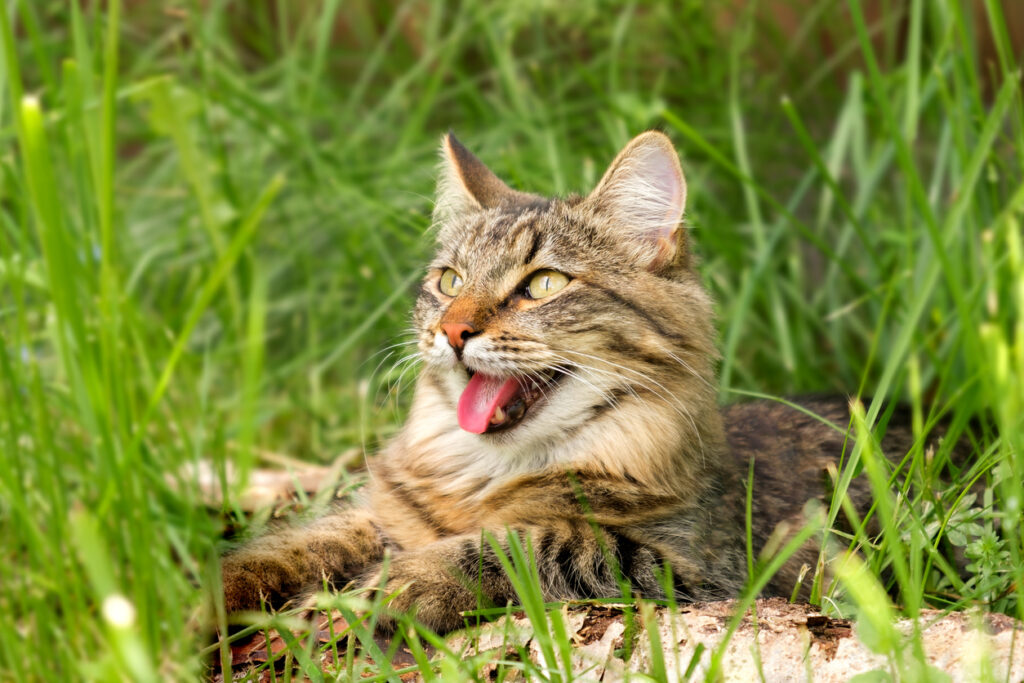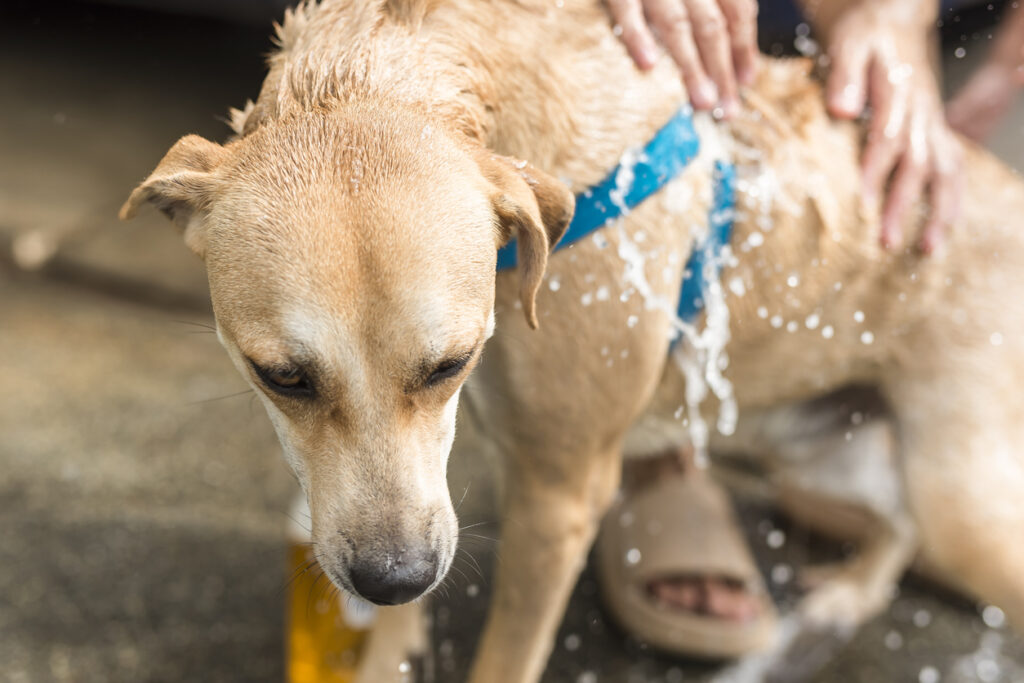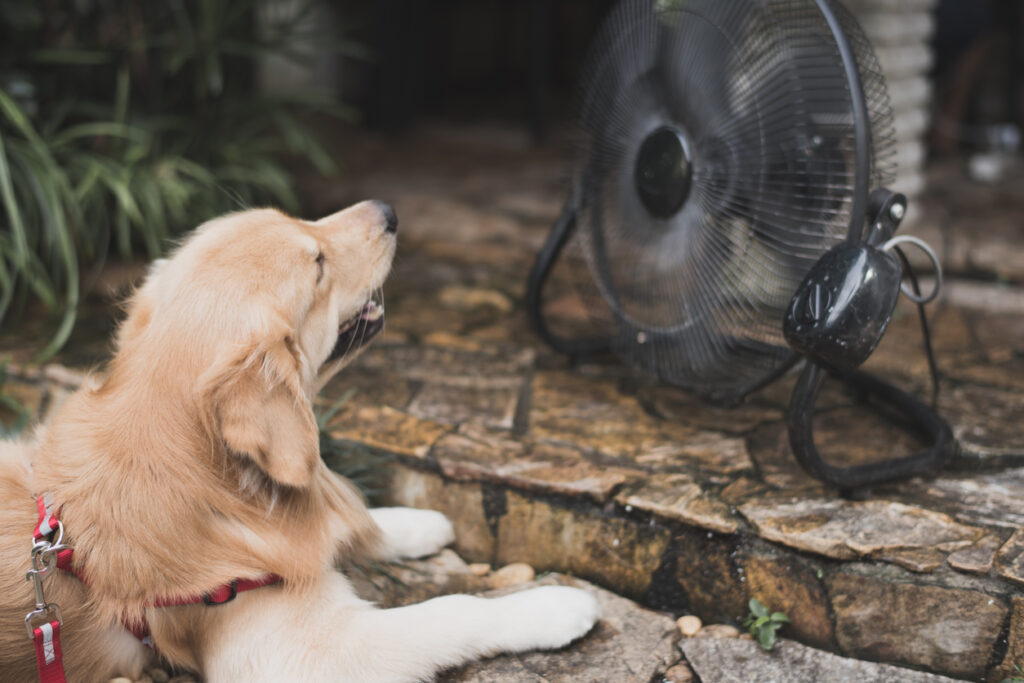Prevent Heatstroke in Pets: Keep Your Pets Cool This Summer
Pets Prone to Heatstroke
Heatstroke can happen to any pet, but some dogs and cats are more prone to it due to their physiology, coat type, and behavior. Here are pets that are particularly susceptible to heatstroke:
Dogs
- Brachycephalic Breeds: Breeds with short noses and flat faces, such as Bulldogs, Pugs, Boxers, and Shih Tzus, have difficulty panting effectively, which impairs their ability to cool down.
- Thick-Coated Breed: Dogs with dense fur, like Huskies, Malamutes, and Newfoundlands, can overheat more easily.
- Overweight Dog: Excess weight can make it harder for dogs to regulate their body temperature.
- Older Dogs: Senior dogs might have less efficient thermoregulation.
- Very Active Dogs: Breeds or individual dogs that are very active or excitable, such as Border Collies and Australian Shepherds, might overexert themselves in hot weather.
- Symptoms of heatstroke in dogs:Excessive panting, drooling, lethargy, vomiting, diarrhea, collapsing.
Cats
- Brachycephalic Breeds: Cats with flat faces, like Persians and Hymalayans, can struggle with heat regulation.
- Long-Haired Breeds: Cats with long, thick fur, such as Maine Coons, Ragdolls, Persians, and Hymalayans are at higher risk.
- Symptoms of heatstroke in cats: Panting, bright red tongue, very red or pale gums, drooling, salivating, restlessness (cats may pace), vomiting, diarrhea (possibly with blood).

It is important to note that cats do not typically pant. Panting in cats is commonly caused by overheating as cats try to cool down. Panting in cats can also be caused by stress or anxiety, vigorous play, or a medical problem such as heart or respiratory problems. If your cat usually does not pant, but is panting on a hot day, follow the steps below for overheating. Note:If your cat pants frequently or shows other symptoms, it’s important to consult one of our veterinarians.
Take Immediate Action if You Suspect Your Pet is Overheating

If your pet is showing signs of overheating, take immediate action to cool them down and ensure their safety:
- Move to a Cool Area: Take your pet to a cool place indoors or to the shade if outside.
- Provide Water: Offer your pet fresh, cool (not cold) water to drink. Encourage small sips rather than gulping. When your pet is overheated, drinking very cold water or ice water can cause your pet’s blood vessels to constrict, potentially worsening the situation by hindering heat dissipation. Cold or ice water can also cause stomach cramps or other stomach problems.
- Cool Them Down: Wet their bodies with cool (not cold) water. Wet towels can be placed on their necks, under their armpits, and between their hind legs. You can also gently pour cool water over their bodies.
- Use Fans or Air Conditioning: To help lower your pet’s body temperature, place them in front of a fan or in an air-conditioned room.
- Monitor Their Temperature: If possible, use a rectal thermometer to monitor their temperature. Dogs and cats’ normal temperature is around 101-102.5°F (38.3-39.2°C). If their temperature is above 104°F (40°C), it’s an emergency.
- Limit Activity: Encourage your pet to rest and avoid physical activity.
- Call Your Veterinarian Immediately:Call College Hills Veterinary Hospital. Veterinary intervention is crucial to cool down the pet rapidly, assess for any internal damage, and provide supportive care such as intravenous fluids. Delay in treatment can worsen the condition rapidly, so quick action by a veterinarian can significantly improve the pet’s chances of recovery and reduce long-term health impacts.
Preventing Heatstroke: Keeping Dogs and Cats Cool in Hot Weather
Walking Your Pet
- Walk your pet in the cooler hours of the morning or late evening.
- Check pavement temperature. Make sure it is not too hot for your pet to walk on. If you wouldn’t walk barefoot on the pavement, it is too hot for your pet too!
- Choose shaded routes if you can.
- Bring water and a collapsable bowl for your pet. Offer water to your pet frequently.
- Know your pet’s limits. Take shorter walks on hotter days.
Traveling with Pets in Hot Weather
- Never leave your pet unattended in a car, even for a short period or with the engine running. Even with the windows cracked, the temperature inside a vehicle can rise rapidly, leading to heatstroke and potential death. On a beautiful 80° weather day, temperatures can quickly heat up in a car to:
109° in 20 minutes!
118° in 40 minutes!
120° in 60 minutes!
- Plan for frequent breaks: If you’re going on a long drive, plan for frequent breaks to allow your pet to stretch their legs and hydrate. Look for pet-friendly rest stops, restaurants, and parks where your pet can safely take a break.
- Use sunshades and air conditioning: Use sunshades on the windows to block direct sunlight, especially if your pet it traveling in a crate or carrier. Ensure that the air conditioning is working correctly and set to a comfortable temperature for your pet.
Traveling with pets during hot weather requires extra planning and precautions. Always prioritize their safety and comfort throughout the journey.
Please watch the video from the Weather Channel about protecting children and pets from hot cars.To start the video, click on the link or the picture below.
Tips for Keeping Pets Cool Indoors

When the temperature and humidity soar, providing your pets with a cool and comfortable indoor environment is crucial. Here are some tips to help you keep your pets cool indoors:
- Keep the air flowing: Ensure proper ventilation in your home by opening windows, using fans, or turning on the air conditioning. This will help circulate cool air and prevent your pet from overheating.
- Create a cool area for your pet: Set up an area in your home where your pet can retreat when it needs to cool down. This area could be a room with tiles or a cool spot near a fan or air conditioning vent. Place a comfortable bed or mat in this area for your pet to relax on.
- Provide access to fresh water: Make sure your pet has access to fresh, cool water at all times. Consider investing in a pet water fountain to encourage hydration. Cats especially prefer flowing water. You can also add ice cubes to their water bowl to provide relief from the heat.
Remember, pets can suffer from heatstroke even indoors, so always keep an eye on them and take necessary precautions to keep them cool and comfortable.
Keep Your Pets Cool with Our Hydration Tips
Proper hydration is essential for keeping your pets cool and healthy during hot weather. Here are some tips to ensure your pets stay hydrated:
- Always provide fresh water: As mentioned earlier, ensure your pet can always access fresh, cool water. Change the water frequently to keep it clean and refreshing. Consider placing multiple water bowls around the house and in the outdoor space to encourage drinking.
- Consider frozen treats: Frozen treats can be a fun way to keep your pets cool and hydrated. You can freeze low-sodium chicken or beef broth in ice cube trays. Both dogs and cats love the water from a can of tuna, salmon, or chicken. Important: Ensure the cans are labeled “no-salt” or “lowsodium” as salt can be extremely toxic to pets. Or you can invest in special frozen treats designed for pets. These treats not only provide hydration but also offer a refreshing treat for your furry friends.
- Monitor water intake: Monitor your pet’s water intake. If you notice your pet drinking less than usual, it could indicate dehydration. Please encourage your pet to drink more by adding ice cubes to their water bowl or offering wet food.
Remember, pets can suffer from heatstroke even indoors, so monitor them and take necessary precautions to keep them cool and comfortable.
Conclusion: Keep Your Pets Cool and Safe
With our Texas heat and humidity, the risk of heatstroke in pets becomes a serious concern. Recognizing the signs of overheating and taking preventative measures can protect your pets from this life-threatening condition. Ensure your pets stay cool by providing fresh water, creating comfortable environments, and avoiding excessive heat and humidity. If you suspect your pet is overheating, immediately contact College Hills Veterinary Hospital. You can help your pets enjoy a safe and happy summer by staying vigilant and prepared.
Warm Regards,
Your Team at
College Hills Veterinary Hospital

